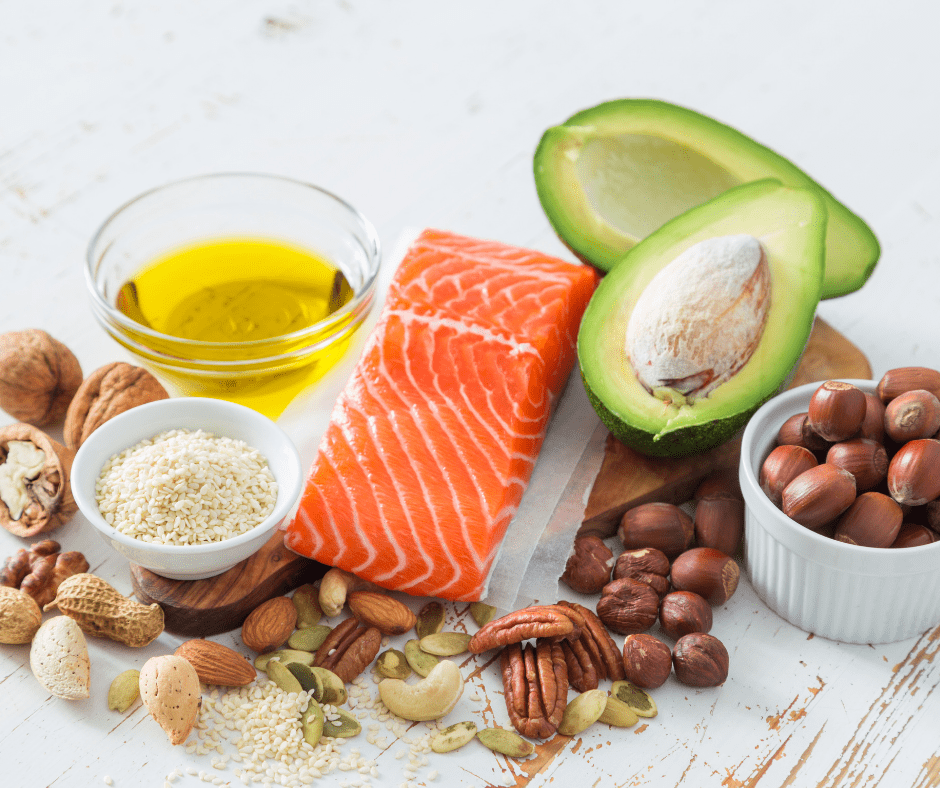Over the years, fats have gotten a bad rap. For years, everyone was told that if they wanted to lose weight, you must eat low fat. But unfortunately, this was not the best advice. The fats ended up being replaced by carbs, leading to more weight gain.
Let’s talk about some basic facts about fats. Fats are one of the three macronutrients found in food – the other two being carbohydrates and proteins. Most fats come from animal sources and some are plant based.
And a very important fact: Fats do not make you fat. They are a vital nutrient that you need for day-to-day functioning.
But, keep in mind, not all fats are created equal. There are good fats and then there are bad fats. I like to put fats into three categories:
- Good fats
- In-between or So-So fats
- And Bad fats
Let’s start with the good fats. These are also known as the unsaturated fats. They are liquid at room temperature and are often further divided into monounsaturated and polyunsaturated fats.
Monounsaturated and polyunsaturated fats lower disease risk. Foods high in unsaturated fats include nuts, seeds, and fish. Examples of polyunsaturated fat are Omega-3 and Omega-6. Your body cannot make these, so they must come from food.
Omega 6 is found in a lot of different foods compared to Omega 3. Omega 6 fats are found in oils from nuts and seeds. It’s also found in refined oils which are common ingredients in boxed foods like cookies, crackers, baked goods, and fast foods. Conversely, Omega 3 fats are generally found in fatty fish, nuts, and seeds.
So, there is a problem that exists today with the amount of Omega 6 fats we are consuming. Normally, we need a 4:1 ratio of Omega 6 to Omega 3 fats. But, since Omega 6 fats are so prevalent in foods these days, we are consuming these fats at a 20:1 ratio! This off balance in the ratio has been implicated in the rise of many chronic diseases such as autoimmune disease, cancers, heart disease, and diabetes.
So, what is the solution? The solution is you either decrease the amount of Omega 6 in your diet or increase the amount of Omega 3 to make the ratio closer to 4:1.
Next, let’s talk about the so-so fats, called the Saturated Fats. Your goal is to have these fats in moderation. They are solid at room temperature and eating too many Saturated Fats can negatively impact your health.
Saturated fats are mainly found in animal foods and some plant foods like coconut, coconut oil, and palm oil. Some foods that contain large amounts of saturated fat include red meat, butter, cheese, and ice cream.
Your goal is to replace saturated fat with unsaturated fat which improves overall health. Saturated fats should be no more than 7-10 percent of your daily caloric intake. So, if you eat 2000 calories per day, only 16-22 grams should be from saturated fats. To put it into perspective, a tablespoon of butter is about 7 grams of saturated fat, and 3 ounces of pepperoni is about 15 grams of saturated fat. Thus, these numbers can add up very quickly.
The third type are bad fats which are called Trans-Fats. There is no controversy on this — this is absolutely the worst type of fat. It makes your bad cholesterol go up leading to heart disease. Trans-fats increase disease risk even when eaten in small quantities.
Trans fats are usually made in a factory by adding hydrogen to a vegetable oil. This process makes it solid at room temperature and more stable as well. When added to food, it gives it a longer shelf life. Foods containing trans-fat are primarily processed foods which contain partially hydrogenated oil. Fortunately, over recent years, trans-fat has been eliminated from many foods. It is very important to read the food label for the amount of trans fats as well as the ingredients list looking specifically for “hydrogenated oil”
So, it’s very important to understand what is considered good fat and bad fats so you can make a healthier choice. Eating good fats will not add inches to your waistline, rather these good fats are actually beneficial for your weight loss and overall health. They also can taste great and help you feel full for a longer period of satiety after you eat. If you want to know more about this topic and healthy cooking as well as gain access to healthy recipes, weight loss and wellness tips, please reach out to me and my team.





